PlayStation Vita
Top 10 Best PlayStation Vita Games of All Time!
With worldwide sales in excess of 80 million, it would be hard to paint the PlayStation Portable as anything other than a resounding success for Sony. The PlayStation Vita improved upon its predecessor in many ways, and it felt like a natural evolution of the PSP. The 5-inch OLED multi-touch capacitive touchscreen was leaps and bounds beyond other handheld systems, and the quad-core processor made it an appropriate platform for big budget titles. The Vita also corrected some of the mistakes the PSP had made. The system used proper game cartridges instead of optical media discs, and there were now two analog sticks to allow for a more authentic console-like experience. The system was also loaded with features. It supported Bluetooth and Wi-Fi, and it could even play PlayStation 4 games via Remote Play functionality! On paper, the Vita had everything you could ask for in a handheld. Unfortunately, the system failed to catch on in a meaningful way. The rise of smart devices ate away potential market share, and the userbase wasn’t large enough to attract AAA development. As a result, the system was largely defined by indie developers, niche genres, and a wealth of smaller titles. Sony didn’t show a lot of support for the system in its waning years, but the Vita community remained vocal and passionate. I consider the Vita to be the most underrated handheld of all time, and it’s library is a lot stronger than the sales figures suggest. It wasn’t easy to narrow this list down to ten entries, so leave a comment if you’d like to wax poetic about one of your favorite games.
10
Shovel Knight
2015
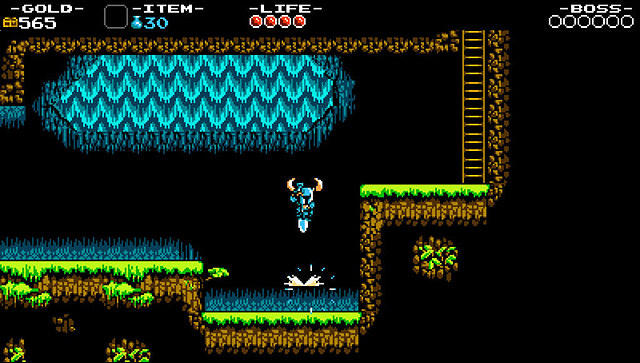
A landmark indie game that was funded on Kickstarter, Shovel Knight is a 2D platformer that draws inspiration from classic NES games like Mega Man, Castlevania and DuckTales (woo-hoo!). The pixel art and catchy chiptune soundtrack hearken back to a bygone era, and the game makes you feel like you’ve opened up a time capsule. Even though Shovel Knight features familiar play mechanics, it still feels fresh and exciting. The combat is surprisingly varied, and the shovel proves to be a remarkably versatile weapon. Yacht Club Games deserves a lot of credit for their top-notch level designs, and there are tons of hidden rooms and optional challenges hidden throughout the game. It took nearly a year before Shovel Knight was ported to Sony’s ecosystem, but it was well worth the wait. The Sony versions added trophies and an exclusive boss battle against Kratos from the God of War series, and they also featured seamless implementation of cross-buy and cross-save. If you bought the game on PlayStation 3, for example, you could download it on the Vita at no additional charge and access the same save file. Very cool, Kanye! Like the other versions of the game, the Vita release of Shovel Knight has three single-player DLC campaigns for free. These campaigns feel dramatically different from the main game and focus on entirely different characters. Plague Knight can die in a fire, but the other three campaigns were a lot of fun. Shovel Knight was five-years-old before the final DLC hit, and Yacht Club Games was still supporting the Vita version after Sony stopped production of the system.
9
Danganronpa 2: Goodbye Despair
2013
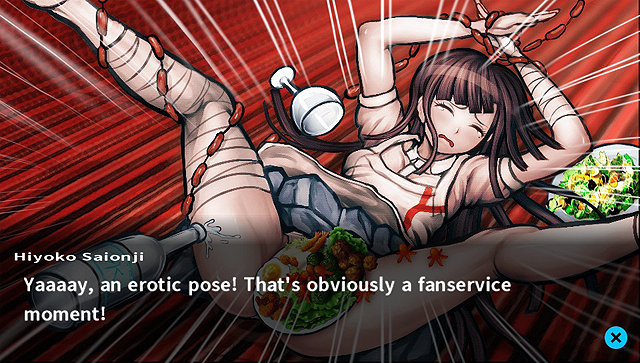
The Vita was home to big budget franchises like Uncharted and Killzone, but I found myself more drawn to obscure indie titles and quirky visual novels. Danganronpa 2 centers around a group of 16 high school kids who are stuck on a tropical island with a killer teddy bear. If a student wants to leave the island, they’ll have to murder another classmate without being caught. Each time a new crime scene is discovered, a class trial is held wherein the surviving students work together to find out who the murderer is. If they’re correct, the culprit will be executed in dramatic fashion. If they’re wrong, the murderer will be allowed to leave and the remaining participants will be executed instead. It’s a lot of fun to watch the mysteries unfold, and you’ll be able to gather clues by partaking in various mini-games. During the trials, you’ll shoot the students with metaphorical “truth bullets” and introduce relevant evidence into the discussions. You’ll also get to slash through their arguments with a “truth blade” and break their mental concentration by playing a makeshift rhythm game. These mini-games are fairly simplistic, but the main reason to play the game is for the engaging story and the intriguing characters. The series has a lot in common with Ace Attorney in that regard, but the gameplay is faster in Danganronpa and the sense of humor is a lot darker. All three Danganronpa games are worth checking out, but the second entry had the strongest story and the most interesting trials.
8
BlazBlue: Chrono Phantasma Extend
2014
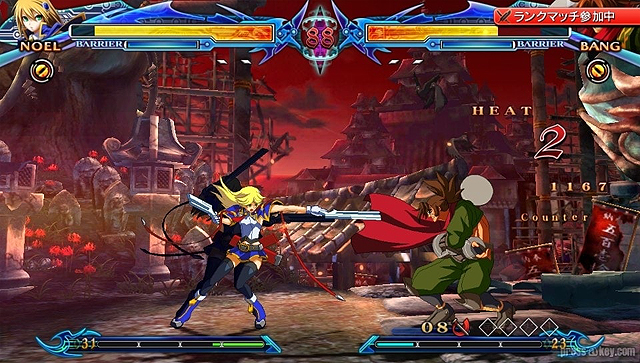
The Vita was a great platform for fighting games. BlazBlue: Chrono Phantasma Extend doesn’t have the same pedigree as Street Fighter or Tekken, but it’s one of the most feature-packed fighting games I’ve ever played. (The main menu reads like the index page from an encyclopedia!) Suffice to say, you’re not limited to your usual assortment of arcade, versus, and story modes. For the uninitiated, BlazBlue is the spiritual successor to Guilty Gear. This means that you can expect industry-leading animation, frenetic action, and plenty of vivacious characters. Chrono Phantasma Extend plays like an interactive anime fight scene, and the colors are absolutely brilliant on the Vita’s screen. Remarkably, the gameplay is just as vibrant as the visuals are. It’s an explosive game with an emphasis on combos, but the action is anything but mindless. It might take a while before you understand the nuances of the air dashes, defensive rolls, and counter assaults, so it’s fortunate that the training and tutorial modes are so comprehensive. The game even has an entire mode dedicated to teaching the player about all of the characters and the world they live in. If you’re new to the series, Chrono Phantasma Extend does a great job of bringing you up to speed. Naturally, the game’s biggest selling point is its diverse cast of characters. There’s nearly 30 fighters in total, and they all have their own style. They have unique personalities too, and I was taken aback by how extensive the story mode was. It almost felt like I was playing a visual novel at certain points, and this was a nice change of pace from all of the hyperactive battles. It’s rare to see a fighting game with so much variety.
7
Gravity Rush
2012
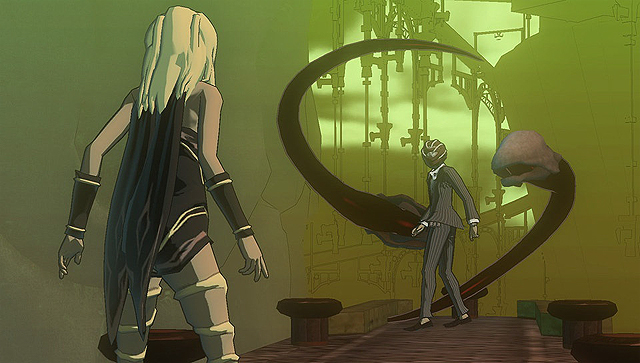
Gravity Rush is a clever action-adventure game with charming characters and unique play mechanics. The game centers around a bubbly amnesiac named Kat who embraces the role of a superhero after she’s given gravity-shifting powers. As players navigate through the game’s open world, Kat’s abilities allow her to walk on walls, ceilings, and on the underside of structures. Players activate Kat’s powers by tilting the Vita, and they can control her trajectory with the gyroscope functions. The intricacies of the control scheme take a while to wrap your head around, but it’s quite liberating to be able to choose your own center of gravity. The combat is riveting too, and it’s a lot of fun to build up momentum in the sky before nailing an enemy with a devastating kick out of nowhere. The combat doesn’t take full advantage of the gravity gimmick and some of the mission objectives feel repetitive after a while, but I had a lot of fun exploring the world and I went out of my way to complete every side quest. Of course, it’s entirely possible that I just wanted to spend more time with Kat. I can say with complete conviction that she’s the most endearing Sony character since PaRappa the Rapper.
6
Tearaway
2013
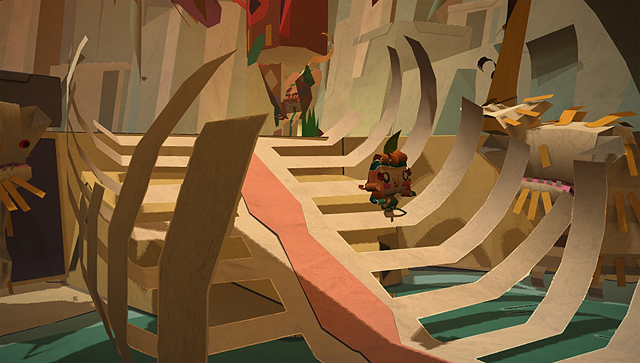
Almost every game on this list can be found on other platforms, but Tearaway was tailor-made for the Vita. Media Molecule made a name for themselves with the LittleBigPlanet series, and Tearaway was another shining example of their creativity. At its core, it’s a simple game that combines platforming and puzzle-solving. What makes the game unique is how it uses all of the Vita’s hardware features as play mechanics. Platforms will move when you tilt the system, the touchscreen is used to create new designs and papercraft objects, and the rear touch panel allows players to push up through the ground and interact with the game’s environments from below. The Vita’s camera is also used in unique ways, and you’ll essentially be able to import objects from the real world into the game’s papercraft landscape. It sounds complex, but it all feels effortless and completely intuitive. Tearaway isn’t especially long, and most people will probably reach the end within five hours or so. Those hours are filled with imaginative scenarios, however, and the game never stops surprising you. The unique gameplay mechanics truly make you feel like you’re a part of the game’s world, and you’d be hard to find an interactive story that’s more interactive than Tearaway. It’s a game that can only be experienced on the Vita, and it demonstrates how much potential the system had.
5
Dragon’s Crown
2013
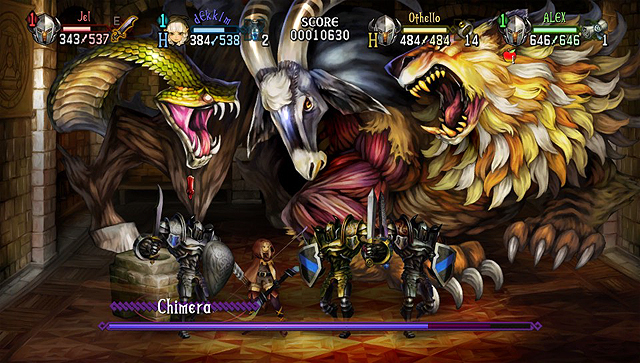
Vanillaware supported the Vita in a huge way, and several of their games could have been mentioned on this list. The remastered versions of Odin Sphere and Muramasa should be considered “must buy” titles, but Dragon’s Crown is a perfect fit for the handheld format. The game is a side-scrolling beat ’em up with RPG elements and co-op multiplayer. (If you’d rather have a single-player experience, up to four CPU-controlled characters can accompany you on your adventure.) The game has nine levels to venture through, and players are encouraged to acquire loot through repeated exploration. Each stage has multiple paths, so there’s an added incentive to play through them again. The game also features six diverse characters, and it’s a lot of fun to replay levels and experiment with new skillsets and playstyles. You’ll uncover new weapons along the way, and you’ll have the opportunity to customize the heroes. There’s a strong emphasis on replayability, and the short stages contribute to the game’s “pick-up-and-play” nature. We can’t really talk about Dragon’s Crown without mentioning the stunning visual design. The fantasy worlds are alive with detail, and the exaggerated characters have a ton of personality. A handful of low-testosterone journalists were uncomfortable with how women were depicted in the game, and that’s usually the mark of great character design.
4
Dead or Alive 5+
2013
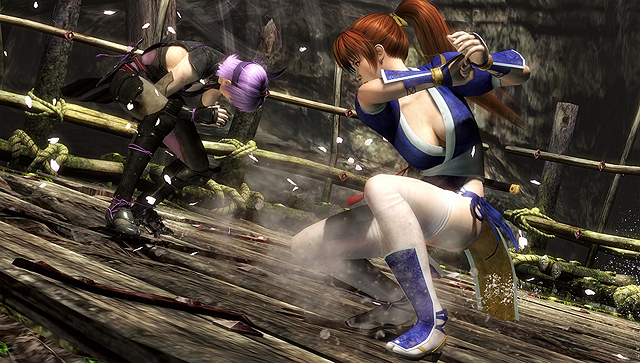
Dead or Alive doesn’t get the respect it deserves from the gaming press, but most of the criticism could be boiled down to an unnatural fear of beautiful women. Although jiggle physics and panty shots have been an integral part of the franchise from the very beginning, there’s a great engine hidden beneath the copious fanservice. The “rock, paper, scissors” dynamic is easy to understand, and the countering system is intuitive. The series has always favored efficient striking over slow, technical move sets. This doesn’t mean that the game is mindless, however. In fact, few fighting games discourage button-mashing more than DOA does. Dead or Alive 5 is built on the same foundation as its predecessors, but the visuals were a generational leap forward for the series. The character models are stunning, and the attention to detail is amazing. The fighters sweat, their clothes get dirty, and the breast physics actually change from one costume to the next! The multi-tiered battle arenas are more impressive than ever, and I was taken aback by how interactive (and destructible) everything was. It’s easily one of the best-looking games on the Vita, and it runs at a silky-smooth 60fps. Dead or Alive 5+ even improves upon the vanilla PS3 release in a few areas. The first-person “Touch” mode is nothing more than a novelty, but the new training options were a great addition. The roster is more of a mixed bag, however, as it’s comprised almost entirely of returning characters. I was happy to see a few guest characters from Virtua Fighters thrown into the mix, but the new fighters that were introduced in subsequent versions of the game never made it onto the Vita. The latest iteration of DOA5 had a total of 36 characters, but Vita owners were locked to 24 with no way to purchase new fighters. The game feels incomplete without the likes of Marie Rose and Honoka, but Dead or Alive 5+ is still a fantastic game when judged by its own merits.
3
Guacamelee!
2013
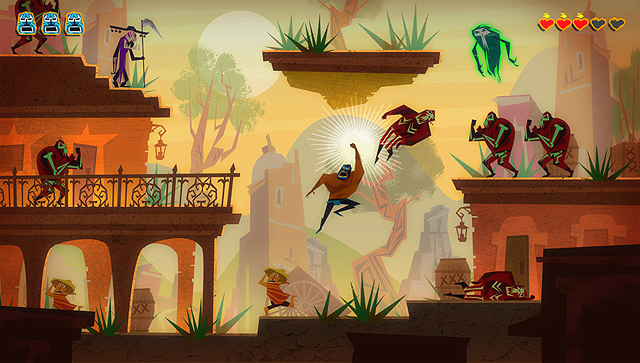
Guacamelee! is a stylish “Metroidvania” game with non-linear worlds and colorful visuals. The game stars a powerful luchador named Juan who has an impressive repertoire of punches, grapples, and throws at his disposal. Of course, Juan will also have to acquire new skills along the way if he wants to access new areas. These abilities run the gamut from double-jumps to chicken transformations, and he’ll even learn how to cross between the world of the living and the world of the dead. The combo-centric combat is surprisingly deep, and the puzzles and platforming challenges will test players to their fullest. The environments are structured around Juan’s arsenal of moves, so the level designs are just as creative as Juan’s abilities are. Guacamelee! draws its inspiration from Mexican folklore, and I appreciate how its theme affects every aspect of the game. Every character you encounter, every area you discover, and every song that plays is a nod to Mexican culture. For what its worth, I think lunchadors and charro skeletons are every bit as compelling as space marines or vampire hunters. Guacamelee! is quite possibly the best Metroidvania-style game to grace a Sony platform since Tomba! landed on the PS1.
2
Undertale
2017
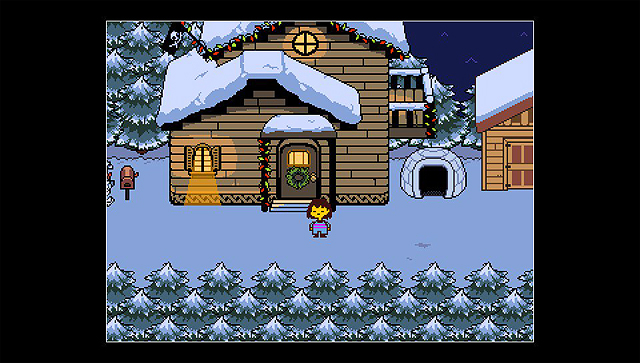
I’ve spoken about Undertale on our list of crowdfunding success stories, but I can’t say enough good things about the game. I wasn’t really following the project during its development, and I thought the hype surrounding it was just a meme. After I played it, I realized that it was truly something special. The game clearly draws inspiration from EarthBound with its simplistic visual style and offbeat sense of humor, but it also breaks from convention in meaningful ways. The battle system is a lot more interactive than most menu-driven RPGs, and the fights feel like the bastard child of Super Mario RPG and Touhou. The adventure is relatively short, but you’ll feel compelled to play through the game multiple times. You don’t have to spend countless hours grinding for experience or backtracking, either, and the brisk pacing makes it a perfect fit for a portable console. It’s an easy game to jump into for short bursts, but I had trouble putting the game down! The writing was funny, clever, and surprisingly emotional. Against all odds, Undertale actually gave you a reason to care about the characters. The incredible music certainly helped in this regard, and I was impressed with how the tracks perfectly matched the overall tone of each scene. Undertale was nearly two years old before it appeared on the Vita, but the benefit of portability made it worth buying all over again.
1
Persona 4 Golden
2012
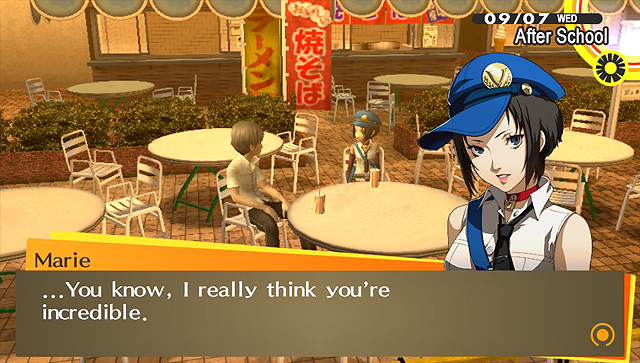
Persona 4 Golden is a stylish RPG that has a lot in common with its predecessors. Once again, players assume the role of a high school student who is trying to balance their social life with school and work obligations. In addition to the mundane, everyday activities that take place in the “real” world, players will discover a parallel “TV world.” This new world allows players adopt various “personas” and delve into a number of heroic missions. In this phase of the game, Persona 4 Golden transforms from a social simulation into a traditional RPG with dungeon-crawling elements. Throughout the course of the adventure, players will solve mysteries, partake in rescue missions, and eventually prevent the real world from colliding with the fictional TV world. The aforementioned simulation aspects still play an important role, however, and players are encouraged to spend time with other characters in order to establish “social links” and increase their attributes. Persona 4 Golden has catchy music, sympathetic characters, and slick production values, but there was a lot going on beneath the surface too. As a rule, I try to avoid mentioning ports from previous generations on these lists. Persona 4 arrived late into the PlayStation 2’s lifecycle, however, so it didn’t feel like an especially old game when it was eventually ported to the Vita. Persona 4 Golden also featured new story elements, outfits, cutscenes, and a brand new character. It’s not a “from-the-ground-up” remake, but it’s different enough to warrant a place on this list. Besides, the Vita’s library was largely defined by JRPGs, so it would be criminal to look past the single best JRPG on the platform. Few games have resonated with me on an emotional level the way that Persona 4 Golden did.

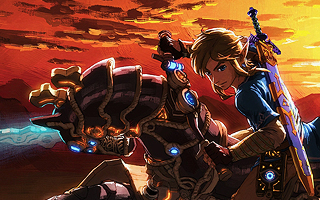
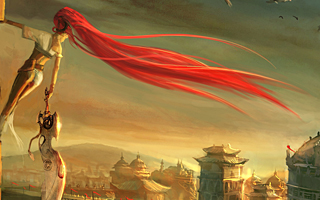
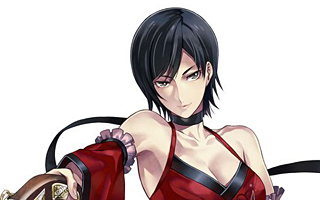
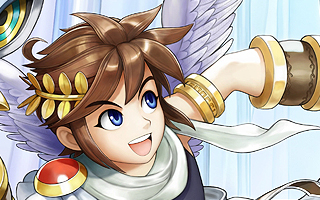
Do you agree with this list? Let us know what you think by leaving a comment below. Your opinion matters!